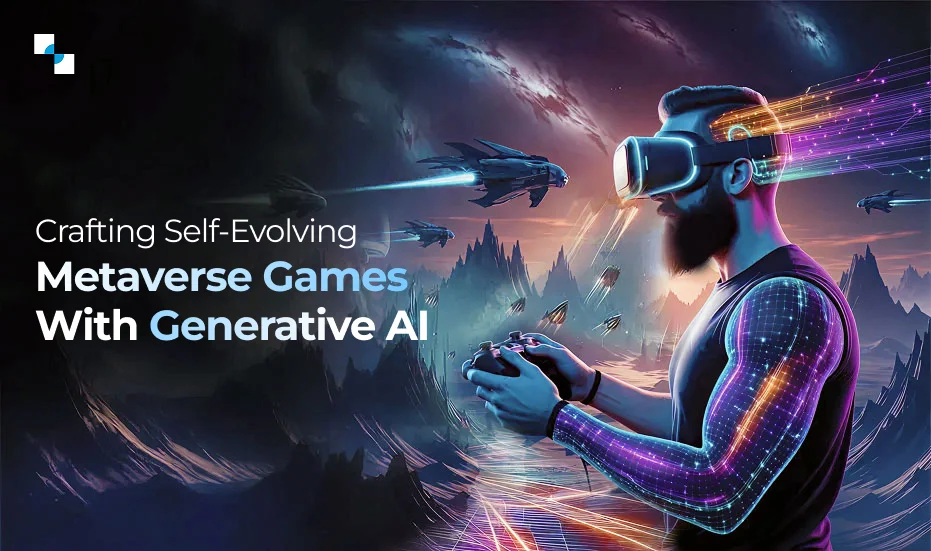Facebook’s rebranding as Meta served as a timely reminder of the need for brands and retailers to include experiential e-commerce into their business plans in order to carve out a distinctive position in the metaverse in the future. The metaverse, the next generation of the internet, is a networked, 3D virtual environment where users may interact with the virtual world and everyone and everything in it in real-time through their unique avatars. Users can engage in activities like shopping, gaming, learning, working, attending concerts and events, and more in this virtual world, but they can also hang around and socialise there. By 2030, metaverse games and NFTs will account for 10% of the luxury goods industry, representing a $56 billion revenue opportunity, according to Morgan Stanley.
Roblox and Fortnite from Epic Games, which each have 350 million monthly active users, are now the two biggest metaverse platforms. Metaverse Shopping Mall Platform will develop swiftly, and new services that aren’t just geared towards gaming will appear, attracting their own user communities with specific goals. Innovative companies and merchants are already developing Shopping Mall in Metaverse experiences, such as 3D virtual flagship and pop-up stores, and planning how their name and goods will be represented in the Metaverse. With the advancement of technology, we can now have immersive online shopping experiences that are richer, more dynamic, and more participatory than ever before.
Building a Virtual Retail Experience: A Guide to Metaverse Shopping Mall Development
Teenagers today will have substantially more purchasing power over the coming ten years, and the expectations of this generation will determine the direction of experiential e-commerce in the metaverse. They want the entire shopping experience to be personalised, interactive, and customizable because they are digital natives who spent their entire childhood communicating online and spending much of their time on mobile devices. A ground-breaking new frontier for the future of shopping is the metaverse, a virtual world where consumers can interact with digital spaces and assets. For shops aiming to offer unique and immersive shopping experiences, building a metaverse shopping mall has become a reality because to the rapid advancement of virtual reality (VR) and augmented reality (AR) technologies.
In recent years, there has been a lot of discussion on the Metaverse Shopping Mall Development, a virtual environment where users can interact with digital spaces and resources. The possibility of developing realistic and engaging virtual retail experiences within the metaverse has become a reality as virtual reality (VR) and augmented reality (AR) technology advance. This blog post will explain how to Create Your Own Metaverse Shopping Mall and serve as a how-to for developing a digital storefront that may entice and impress clients.
Simple Steps To Metaverse Virtual Mall Development
Step 1: Comprehend the metaverse landscape
Understanding the metaverse landscape is the first step in creating a virtual metaverse mall. The metaverse is a multi-platform virtual environment or universe where users can communicate and interact with digital objects. The Sandbox, Somnium Space, VRChat, and Decentraland are a few well-known metaverse platforms. To choose the Metaverse virtual mall platform that best fits your vision and goals, you must thoroughly research and comprehend the distinctions between each one’s distinctive features, capabilities, and community.
Step 2: Define Your Vision and Goals
Identifying your vision and objectives is the first step in building your own metaverse mall. What do you hope to accomplish with your experience shopping online? Do you want to seamlessly extend your physical business or brand into the online space? Are you aiming your marketing efforts at a particular metaverse niche market or client segment? Having a clear vision and set of objectives can assist you in making wise choices as you move through the Metaverse Shopping Mall Development process.
Step 3: Pick the Correct Platform
The metaverse offers a variety of platforms for building virtual shopping experiences. The Sandbox, Somnium Space, Decentraland, and VRChat are a few of the well-liked choices. Every platform has unique features, capabilities, and communities, so it’s important to examine them all and select the one that most closely matches your vision and objectives. Take into account elements like usability, customizability options, community involvement, and revenue prospects.
Step 4: Create and Individualize Your Virtual Space
Designing and personalizing your Shopping Mall in Metaverse is the next step after selecting the appropriate platform. This involves designing your virtual shopping mall’s layout, architecture, and aesthetics. In order to create a visually appealing and immersive environment that reflects your brand identity and offers a pleasurable shopping experience for your customers, you may use the platform’s built-in capabilities or work with virtual architects and designers.
Step 5: Add Goods and Services to Your Virtual Mall
The next step after building your virtual area is to add products and services to it. This can involve developing digital shops or kiosks, making virtual replicas of your actual things, or presenting digital goods or services that are only available in the metaverse. Additionally, you can work together with other businesses or artists to offer a wide variety of goods and experiences in your online mall.
Step 6: Activate Interactions and Socialization
The metaverse’s ability to promote user interaction and socialization is one of its main benefits. Include interactive aspects that enable user connection, communication, and collaboration, such as chat capabilities, avatars, and social features. This can improve the entire shopping experience by fostering a sense of community and involvement within your virtual mall.
Step 7: Put Monetization Strategies into Practise
Making a virtual shopping experience in the metaverse profitable is crucial. You can use a variety of monetization techniques, including the selling of virtual goods, virtual currency, and sponsorship opportunities. Blockchain technology can be used to facilitate safe and open transactions, as well as to increase the rarity and worth of virtual assets.
Step 8: Market and Promote Your Online Mall
Lastly, just as in the real world, advertising and marketing your online mall is essential for drawing customers and increasing traffic. Use a variety of marketing strategies to spread the word about and spark interest in your online retail experiences, such as social media, email marketing, and influencer collaborations. To increase traffic and engage with your target audience, think about conducting virtual events, partnerships, and promotions.
Create Your Own Metaverse Virtual Mall with Antier
Interactive shopping experiences will become standard practice for brands across all categories as retail organizations experiment with new ways to sell, attract new customer populations, and promote sustainability. For their experiential e-commerce and metaverse endeavours, all brands must have three to five-year goals. All brands will need to actively monitor the space to determine which advancements correspond most closely with business models, their values, and target audiences and invest in those areas accordingly because the technology supporting these experiences is growing swiftly. An intriguing and creative Metaverse Shopping Mall Development method to expand your brand’s presence into the virtual world and provide your customers with a distinctive and immersive shopping experience is to build your own Metaverse Shopping Mall Platform. Get in touch with experts of Antier to build Shopping Mall in Metaverse!







